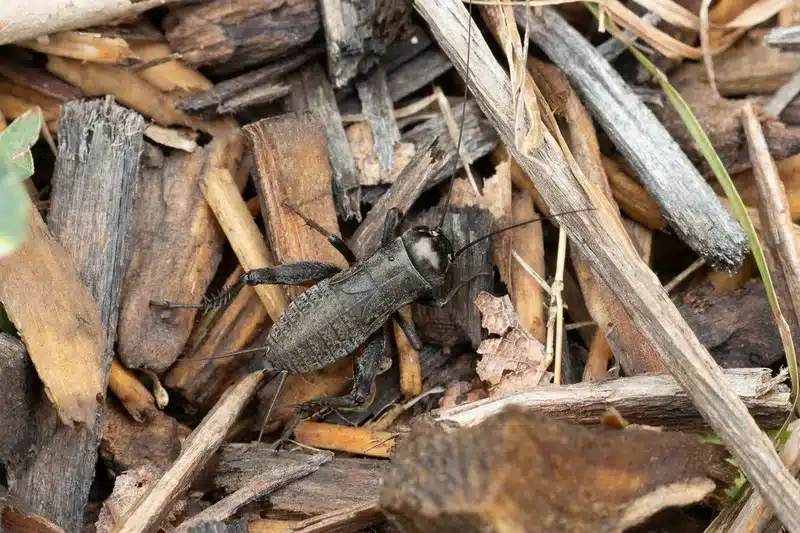When you hear chirping outside your window at night or spot jumping insects in your garden, you might wonder whether you’re dealing with crickets or grasshoppers. These two groups of insects are closely related, but they behave very differently and require different approaches when they become problematic for homeowners.
Both crickets and grasshoppers are closely related jumping insects that share similar behaviors, but understanding their differences helps homeowners identify which pest they’re facing and choose the right management strategy.
What does the science say?
Both crickets and grasshoppers belong to the same order of insects called Orthoptera, which means “straight wings.” However, they split into different sub-orders based on their anatomical differences: grasshoppers belong to Caelifera (meaning “chisel-bearer,” referring to their short antennae) while crickets belong to Ensifera (meaning “sword-bearer,” referring to their long, sword-like antennae). This taxonomic separation reflects millions of years of evolutionary adaptation to different ecological niches.
In our 57 years serving the DMV area, our family business has encountered countless situations where homeowners struggled to tell these insects apart. The confusion is understandable because both insects share similar jumping abilities and sound-making behaviors. However, knowing the key differences can save you time and effort in managing them effectively.

Quick Cricket vs Grasshopper Identification Guide
The easiest way to distinguish between crickets and grasshoppers is by looking at their antennae. Crickets have long, thread-like antennae that are often longer than their entire body. Grasshoppers, on the other hand, have short, stout antennae that are usually less than half their body length.
Body color and size also provide helpful clues. Crickets typically appear darker, ranging from brown to black, with house crickets showing a distinctive yellow-tan color with three dark bands on their head. Grasshoppers are usually green or brown and can grow up to 50 mm, making them generally larger than most cricket species.
| Crickets | Grasshoppers | |
|---|---|---|
| Antennae | Long & thread-like | Short & stout |
| Activity Time | Night (nocturnal) | Day (diurnal) |
| Sound Method | Wing rubbing | Leg rubbing |
| Diet | Omnivorous | Plant feeders |
| Home Problems | Indoor noise & fabric damage | Garden & plant damage |
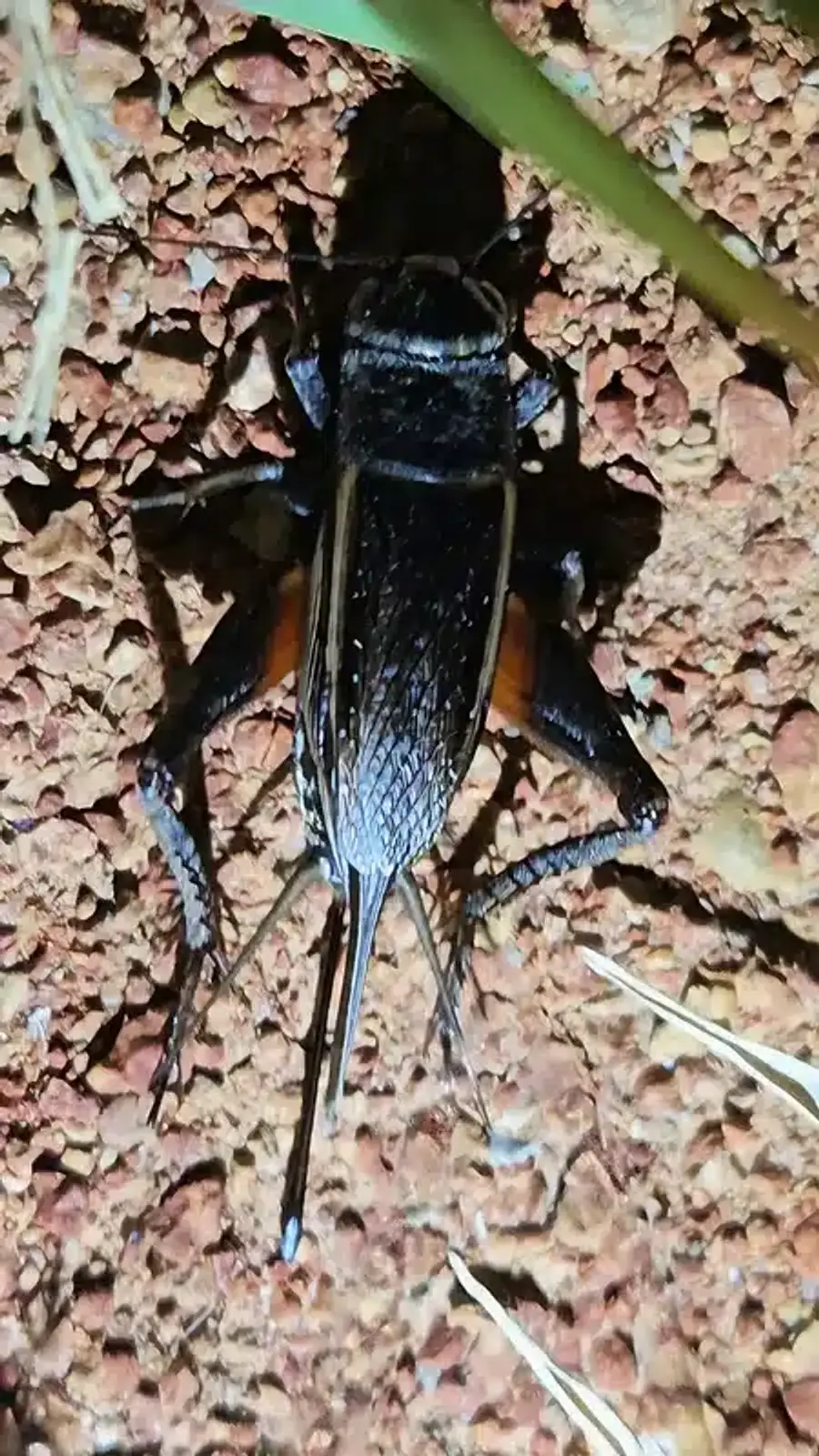
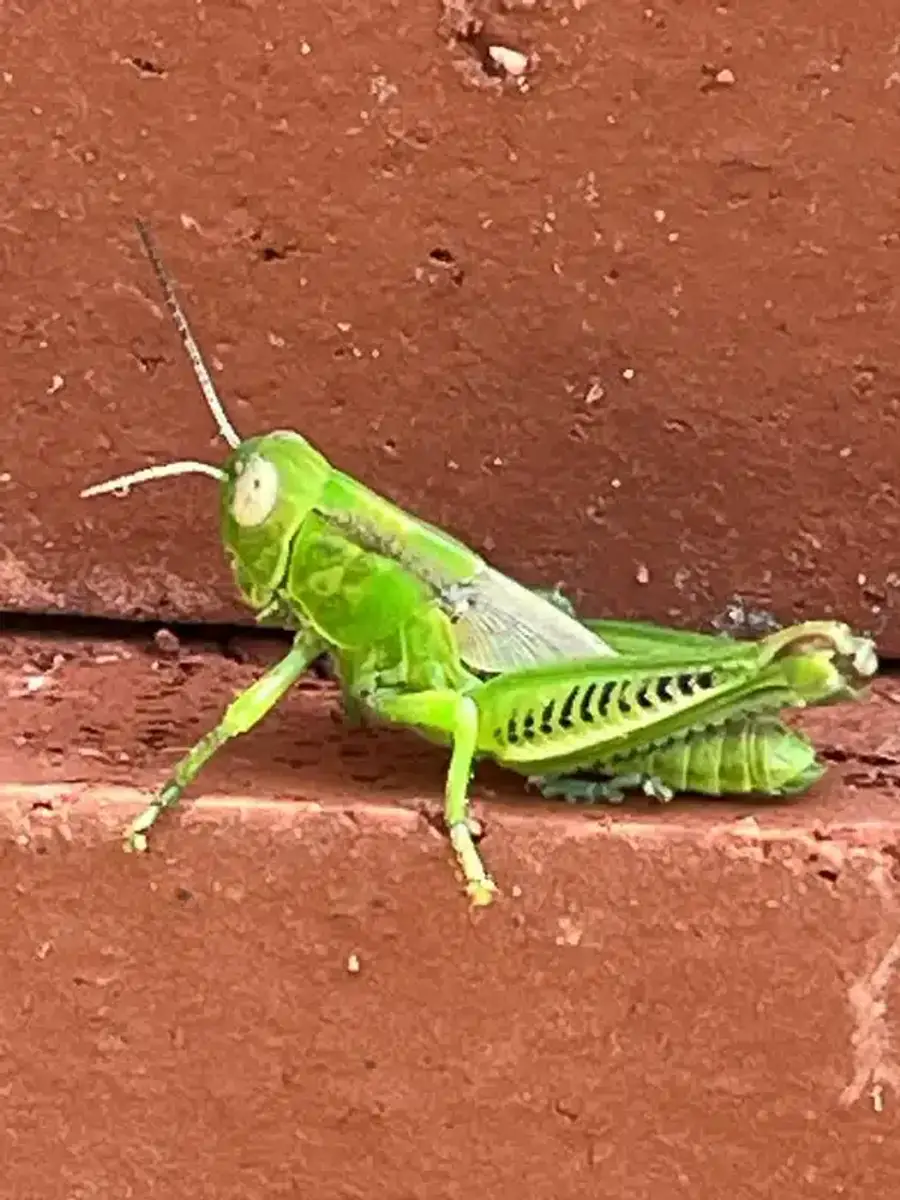
Another distinguishing feature involves their ears. Cricket ears are located on their front legs (tibiae), while grasshopper ears are positioned on their first abdominal segment under their wings. This difference affects how they respond to sounds and vibrations in their environment.
Sound Differences Between Crickets and Grasshoppers
The sounds these insects make represent one of their most noticeable differences. Crickets create their chirping by rubbing their wings together, producing three distinct types of songs: calling songs to attract mates, courtship songs during mating, and rivalry songs when competing with other males.
Grasshoppers use a different method entirely. They rub their hind legs against their front wings to create sound. Many grasshopper species also add a crackling noise called “crepitation” when they fly, which you might notice during hot summer afternoons.
The timing of these sounds also differs significantly. Crickets are most active during dusk and nighttime hours, creating the familiar evening chorus many homeowners know well. Grasshoppers prefer sunny, warm conditions and typically make their sounds during the daytime.
Cricket and Grasshopper Behavioral Patterns
Understanding when and where these insects are most active helps homeowners prepare for potential problems. Crickets are nocturnal and crepuscular, meaning they’re most active at dusk and throughout the night. They’re attracted to artificial lights, which explains why they often end up near windows and porch lights.
Grasshoppers are diurnal creatures that thrive in sunny, warm weather. They prefer open areas like lawns, gardens, and field edges. During hot August afternoons in the DMV area, grasshopper activity often peaks, leading to increased plant damage in gardens.
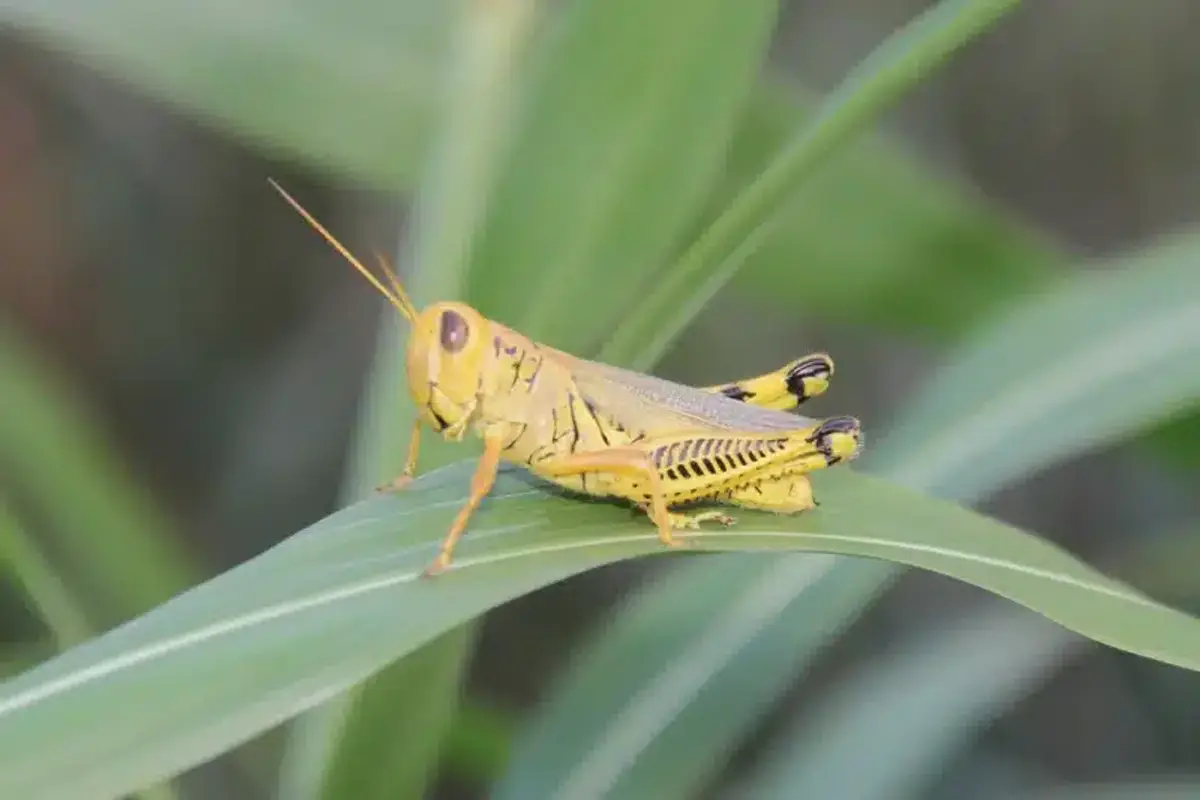
Cricket Seasonal Patterns in Virginia, Maryland, and DC
In the Mid-Atlantic region, different cricket species follow distinct seasonal patterns. Spring field crickets overwinter as late-stage nymphs and become mature adults from May through August. Fall field crickets lay eggs that survive winter, with adults singing from late July through October.
House crickets can maintain continuous generations indoors where temperatures remain warm. Their life cycle takes 2-3 months when temperatures stay between 80-90°F. Camel crickets remain active year-round in humid areas like basements and crawl spaces.
Grasshopper Life Cycles in the DMV Area
Grasshoppers in Virginia, Maryland, and DC typically complete one generation per year. They lay egg pods in soil during late summer, and these eggs represent their primary overwintering stage. When soil temperatures warm in April and May, nymphs hatch and begin feeding on available vegetation.
Adult grasshoppers reach peak activity from June through September. This timing explains why the earliest lawn and garden damage usually appears in late June when nymphs are half-grown and feeding heavily.
Difference Between a Cricket and Grasshopper Diet
The cricket vs grasshopper debate becomes clearer when you examine their eating habits. Grasshoppers are primarily plant feeders that can cause significant damage to gardens and landscaping. They particularly enjoy leafy vegetables like lettuce, beans, and potato plants, as well as corn and various ornamental plants.
Crickets are omnivorous scavengers with much more varied diets. Outdoors, they feed on decaying organic matter, small insects, and plant materials. When crickets get inside homes, they may nibble on fabrics, especially items that contain sweat, food residue, or natural fibers like wool and cotton.
This dietary difference significantly impacts how these insects affect homeowners. While grasshoppers focus their damage on outdoor plants and gardens, crickets can cause both outdoor plant damage and indoor fabric damage when they gain access to homes.
Common Cricket and Grasshopper Species
Several cricket species commonly invade homes in the DMV area. House crickets (Acheta domesticus) are yellow-tan with three dark bands on their heads. Field crickets include both spring species (Gryllus veletis) and fall species (Gryllus pennsylvanicus). Camel crickets (Ceuthophilus species) appear hump-backed and wingless.
Grasshoppers rarely breed indoors, so grasshopper complaints almost always involve outdoor plant damage rather than indoor infestations. The species that cause problems in our area typically migrate from adjacent fields, unmowed areas, or drought-stressed habitats into maintained landscapes and gardens.

Why Crickets and Grasshoppers Become Nuisances
Crickets create problems for homeowners in several ways. The most common complaint involves noise pollution inside bedrooms and living areas. A single cricket’s chirping can seem incredibly loud indoors because hard floors and corners amplify the 4-5 kHz frequencies these insects produce.
Additionally, crickets can cause fabric damage by nibbling on clothing, curtains, and upholstery. They also create psychological discomfort for homeowners who discover them in basements, crawl spaces, or other indoor areas.
Grasshoppers become problematic primarily through plant damage and defoliation. They can relocate from adjacent hay fields or unmanaged lots during drought conditions, concentrating their feeding on maintained gardens and landscaping. Large, visible grasshoppers also cause aesthetic concerns around patios, pools, and outdoor entertaining areas.
Cricket and Grasshopper Prevention Strategies
Effective cricket and grasshopper management starts with exclusion and habitat modification. Seal cracks and crevices around your home’s foundation, repair door sweeps, and screen crawl space vents. Caulk openings around pipes and wire penetrations to prevent indoor entry.
According to the University of Maryland Extension, maintaining proper landscaping distances helps significantly. Keep groundcovers, vines, and mulch at least 18 inches from your foundation. Mow lawns regularly and store firewood and debris away from exterior walls.
For outdoor lighting that attracts crickets, consider switching to yellow “bug” bulbs or reducing unnecessary night lighting around entryways and windows. This simple change can dramatically reduce cricket activity near your home’s exterior.
Essential Prevention Steps
- Seal Entry Points: Caulk cracks around pipes, repair door sweeps, and screen crawl space vents
- Maintain Distance: Keep groundcovers, mulch, and vegetation at least 18 inches from your foundation
- Reduce Lighting: Switch to yellow “bug” bulbs or minimize unnecessary night lighting near entryways
- Moisture Control: Fix leaks and eliminate standing water sources around your home

Professional Cricket and Grasshopper Control
When prevention measures aren’t enough, professional treatment becomes necessary. Our registered technicians use different approaches depending on whether you’re dealing with crickets or grasshoppers. For cricket problems, we focus on both interior and exterior treatments, targeting areas where crickets hide and travel.
Cricket treatments typically involve crack and crevice applications using non-repellent insecticides indoors, combined with perimeter treatments around the exterior foundation. We also address conducive conditions like moisture problems and entry points during service visits.
Grasshopper management focuses primarily on exterior areas and garden protection. Research shows that timing is critical for effective grasshopper control in residential settings.
What does the science say?
According to Virginia Tech Cooperative Extension research, treating grasshopper nymphs when they’re ¾ inch or smaller provides the best control results. This timing targets the insects during their most vulnerable developmental stage before they develop full mobility and reproductive capability. Adult grasshoppers are significantly more difficult to control due to their enhanced jumping ability and tendency to disperse rapidly when disturbed.
Non-Chemical Cricket and Grasshopper Control Methods
Several non-chemical methods work well for managing both cricket and grasshopper populations. For crickets, vacuum capture provides immediate relief indoors. Sticky insect monitors in basements help track activity levels and catch wandering individuals.
Grasshopper management benefits from early planting schedules that allow crops to harden before peak feeding periods. Using floating row covers on seedlings protects vulnerable plants during critical growth stages. Additionally, mowing and weed-eating perimeter vegetation removes alternate host plants that support grasshopper populations.
Natural Predators for Cricket and Grasshopper Control
Encouraging natural predators helps maintain long-term control of both cricket and grasshopper populations. Birds, spiders, praying mantises, and toads all feed on these insects. In rural settings, chickens and guinea fowl provide effective grasshopper suppression.
For large-area grasshopper problems, Nosema locustae baits offer a biological control option. These wheat-bran formulations work more slowly than chemical treatments but provide homeowner-friendly suppression of grasshopper populations over time.
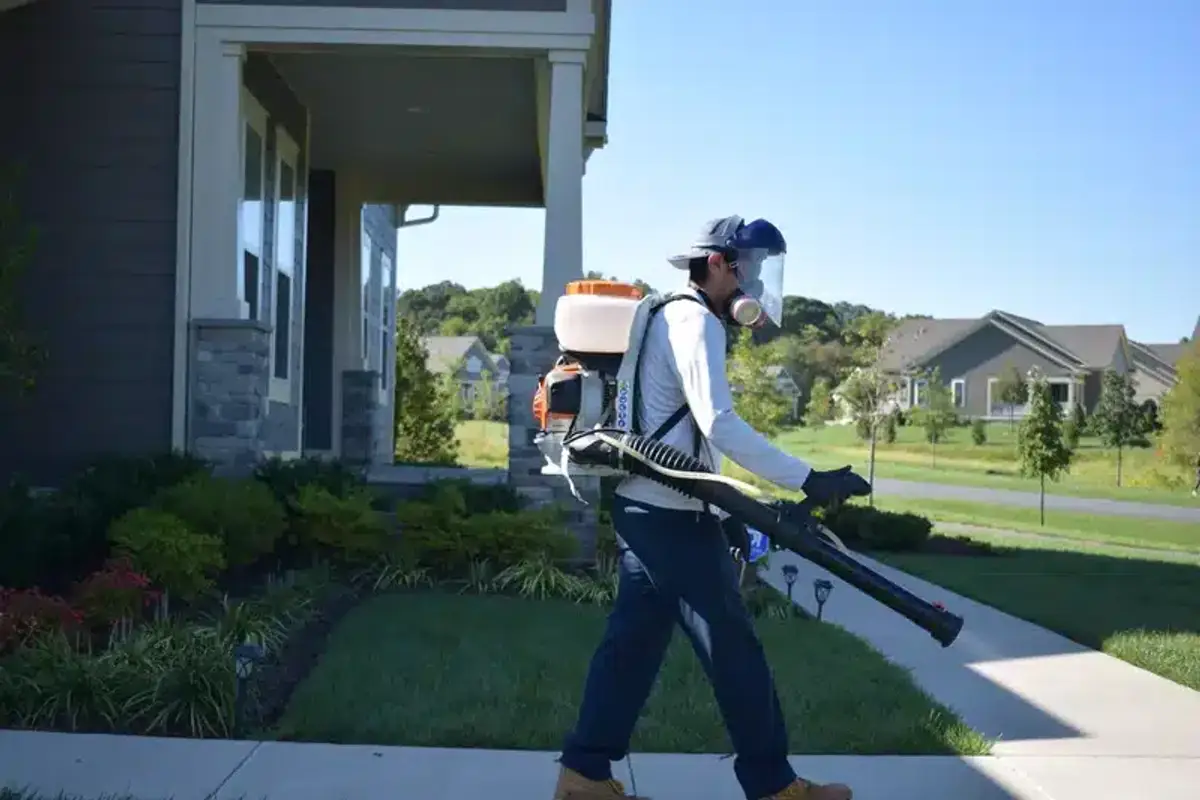
When to Call Professional Help
Homeowners should consider professional assistance when DIY methods fail to provide adequate control. Persistent indoor cricket chirping, especially in bedrooms and living areas, often requires professional intervention to locate and eliminate breeding sources.
For grasshopper problems, professional treatment becomes necessary when significant plant damage occurs or when large populations threaten valuable landscaping and garden investments. Early intervention typically provides better results than waiting until damage becomes severe.
Our team brings over 50 years of experience managing cricket and grasshopper problems throughout the DMV area. We’ve removed 9 of the industry’s harshest chemicals from our treatment programs, focusing on products we’d feel comfortable using in our own homes.
Whether you’re dealing with late-night cricket concerts or grasshopper garden raids, understanding the differences between these insects helps you choose the right management approach. If you’re experiencing persistent problems with either crickets or grasshoppers around your property, don’t hesitate to reach out for professional guidance.
For expert identification and customized treatment plans, call us at 703-683-2000 or email info@bettertermite.com. Our registered technicians can help you determine exactly which insects you’re facing and develop an effective management strategy tailored to your specific situation.
Frequently Asked Questions
How can I tell the difference between a cricket and grasshopper sound?
+
Crickets produce their characteristic chirping by rubbing their wings together, creating three distinct song types. Grasshoppers rub their hind legs against their front wings, often adding a crackling “crepitation” sound when flying. Additionally, crickets are most vocal at night while grasshoppers make sounds during warm, sunny days.
Why do I only hear crickets at night but see grasshoppers during the day?
+
Crickets are nocturnal and crepuscular insects, meaning they're most active at dusk and throughout the night. Grasshoppers are diurnal creatures that prefer sunny, warm conditions and are most active during daylight hours. This natural behavior pattern explains why you encounter them at different times.
Can crickets actually tell me the temperature outside?
+
Yes, cricket chirping rates are temperature dependent. You can estimate the temperature by counting cricket chirps in 15 seconds and adding 40 to get the approximate temperature in Fahrenheit. This relationship, known as Dolbear's Law, works particularly well with snowy tree crickets but applies to field crickets too.
Which insect is more likely to damage my garden plants?
+
Grasshoppers are primarily plant feeders that can cause significant damage to gardens and landscaping. They particularly enjoy leafy vegetables, corn, and ornamental plants. Crickets are omnivorous scavengers that typically cause minimal plant damage compared to grasshoppers.
Do grasshoppers ever come inside homes like crickets do?
+
Grasshoppers rarely breed or establish populations indoors. Cricket species like house crickets, field crickets, and camel crickets commonly invade homes seeking shelter, moisture, or warmth. Grasshopper complaints almost always involve outdoor plant damage rather than indoor infestations.
What time of year are cricket and grasshopper problems worst in Virginia?
+
Indoor cricket complaints typically spike during cool September nights as adults seek warmth and light. Grasshopper damage usually peaks in late June when nymphs are half-grown and feeding heavily, with adult activity continuing through September in the DMV area.
How do I know if I need professional treatment for crickets or grasshoppers?
+
Consider professional help when you experience persistent indoor cricket chirping that disrupts sleep or daily activities, or when grasshoppers cause significant damage to valuable plants and landscaping. Early intervention typically provides better results than waiting until problems become severe.
Are there natural ways to control cricket and grasshopper populations?
+
Yes, encouraging natural predators like birds, spiders, and praying mantises helps control both insects. For grasshoppers specifically, early planting, row covers on seedlings, and maintaining proper lawn care can reduce problems. For crickets, reducing outdoor lighting and improving home exclusion works well.
With five years of hands-on experience in the pest control industry, George Schulz is a registered technician with the Virginia Pest Management Association and a proud third-generation professional in a family business that's been protecting homes for over 57 years. He manages and trains a team of service pros while also leading internal research efforts—recently spearheading a deep-dive review of thousands of documents on pest control materials to hand-pick the most kid and pet friendly, most effective solutions tailored specifically for homes in the DC metro area.
